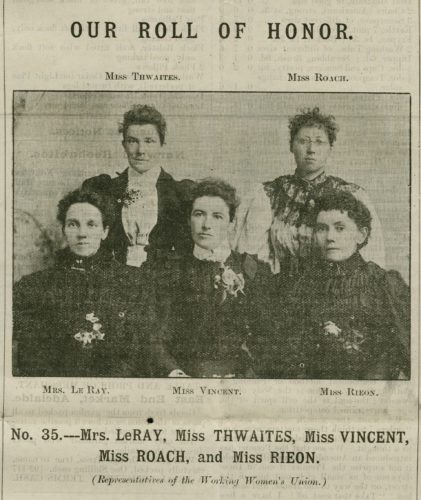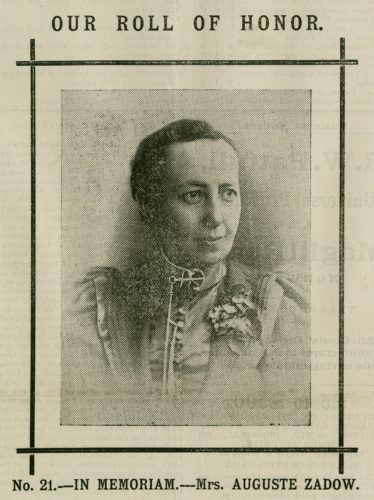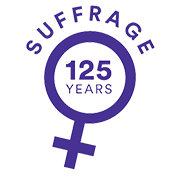Women’s Suffrage was not achieved in isolation; there were other factors that influenced its development, success, and challenges. This month we explore women’s increasing participating in the workforce, and in particular the role of the Working Women’s Trade Union.
South Australia was the first place outside Britain to legalise Trade Unions, in 1876, and after fast-paced growth in 1884 the United Trades and Labor Council was formed to coordinate union activities and be a single, united, voice on the topic on unions[i].
In the mid to late nineteenth-century Australia, women made up twenty per cent of the workforce, rising to between thirty and forty percent in densely populated urban areas. While nearly half worked in domestic services, a sizeable amount worked on farms, within textile industries, as shop assistants, nurses and teachers.
Trade unions were dominated by men and women’s involvement in unions was limited, but crucial in the effort to improve the conditions of working women. By the 1890s eighty percent of women workers were employed in four main industries: “community services; wholesale and retail; finance, property and business; and manufacturing”[ii].
On 15 January 1890 the SA Register reported:
“A public meeting of ‘female workers in all branches of labour’ was held on Tuesday evening, January 14, in the Rechabite Hall, Grotestreet, ‘for the purpose of organizing a Women’s Trades Union.’ About a 100 women attended, together with thirty of the other sex, including members of the Trades and Labour Council.”[iii]

Members of the Working Women’s Trade Union, featured in the Weekly Herald, 13 November 1896.
South Australia’s Working Women’s Trade Union was established at the meeting, just shy of four years before women in South Australia won the right to vote. Key women in establishment of the Working Women’s Trade Union included Mary Lee, the prominent suffrage activist, and Augusta Zadow.
Augusta Zadow was born in Germany in 1846 and is best known for her role as the first female inspector of factories, or as the papers reported ‘inspectress of factories’ and ‘lady inspector of factories’. She was a key figure in the establishment of the Union and its founding treasurer[iv]. In her roles she also investigated workplace complaints relating to wages, work safety and working conditions. She was “persistent, precise and practical in her investigations of factories, often writing into the night to finish reports.”[v]

Augusta Zadow, First Female Inspector of Factories, featured in the Weekly Herald, 17 July 1896
After the establishment of the Working Women’s Trade Union, Mary Lee wrote in a letter to The Observer “let us hope that the Trades and Labour Council will follow up their generous action by fighting for women the battle of the ballot”[vi]
Next month we will jump forward to August 1894 to learn more about a significant moment in the lead up to the achievement of equal suffrage in South Australia.
Follow the hashtag #Suffrage125 throughout 2019 to learn more.
[i] State Library of South Australia. ‘Working Women’s Trade Union’. Accessed on 26/06/2019http://www.samemory.sa.gov.au/site/page.cfm?u=675
[ii] Elton, Jude. “Mary Lee”, Adelaidia. Accessed on 22/03/2019: http://adelaidia.sa.gov.au/things/mary-lee-bust.
[iii] State Library of South Australia. ‘Women’s Trades Union public meeting in Adelaide’. Accessed 27/06/2019. http://www.slsa.ha.sa.gov.au/marylee/15jan90a.htm
[iv]Francis, Rosemary. “Trade Unions”. The Encyclopaedia of Women & Leadership in Twentieth-Century Australia. Accessed on 22/03/2019:
[v] Office for Women, South Australian Government. ‘Key People – Augusta Zadow’. Accessed 26/06/2019. https://officeforwomen.sa.gov.au/womens-policy/125th-anniversary-of-suffrage/key-people
[vi] State Library of South Australia. ‘Working Women’s Trade Union’. Accessed on 26/06/2019. http://www.samemory.sa.gov.au/site/page.cfm?u=675






1 Comment
Interested. I sent you last year a copy of my fact/fiction novel featuring Mrs Mary Lee as a main character who acts as mentor to a n atypical fictional immigrant. The title was chosen to appeal to young 21C women, for Mrs Lee’s dedication to women’s welfare and also the challenges of immigration for respectable younger women. My research has been widely commended and the book favoured in some school libraries as a consequence.. It does not resemble an academic tome but Mrs Lee’s activities are accurately documented as are her protegeé Beatrice’s encounters in the colonial society of the period. The book covers the years of Mary Lee’s life here, 1879 until 1909. I prompted a sequel about SA from 1910 until 1926 and then to complete the South Australian trilogy, one covering 1930 to the present. “Beatrice’s Commonsensical Approach” (commonsense one of Mrs Lee’s favourite epothets) is the title and other copies are available from the publisher (also South Aussie) Ginninderra Press in Port Adelaide. It is also into all the libraries and on Kindle.